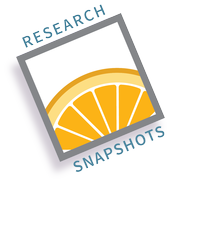CAP: Combining Individual Protective Covers (IPCs) and brassinosteroids to prolong health and improve fruit yield and quality in newly planted trees under HLB

Research by: UF/IFAS SWFREC
Article written by: Fernando Alferez
Article edited by: Ed Stover
What is the technique?
The Asian citrus psyllid, Diaphorina citri Kuwayama (Hemiptera: Liviidae), is an invasive citrus pest that vectors the phloem-dwelling bacterium, Candidatus Liberibacter asiaticus (CLas), a putative cause of citrus greening disease, also known as Huanglongbing, HLB. In Florida, the D. citri – CLas complex is considered the greatest threat to the citrus industry. Individual Protective Covers (IPCs), a type of psyllid exclusion mesh bags, are increasingly being adopted to efficiently protect newly planted citrus trees from HLB infection. However, IPCs typically must be removed after 2-3 years due to tree growth. Early evidence indicates that brassinosteroids (Brs), a relatively new class of plant hormones, delay HLB progression. With the aim of prolonging tree health after IPC removal, we are investigating the efficacy of Brs in protecting and/or preventing trees from ACP and CLas infection once they are left exposed. Brs have been approved for commercial use in Florida citrus.
How is the described procedure related to the research being conducted and what was discovered?
In a UF/IFAS Southwest Florida Research and Education Center (SWFREC) planting of three mandarin cultivars (Early Pride, SugarBelle and Tango) on two different rootstocks (Sour orange and US-942), IPCs were maintained for the first three years of growth and compared to control trees without IPCs. Upon IPC removal we initiated monthly Brs applications by foliar spray (Figure 1). The same approach was used on Hamlin and Valencia trees in commercial settings. We determined that, while IPCs were in place, they effectively excluded psyllids and prevented CLas infection, while unprotected trees became 100% infected. Although the project is in its first months of Brs treatment in April 2023, we already found that treatment with Brs prevented CLas infection four months after IPC removal. In contrast, 60% of the trees grown in IPCs without subsequent Brs treatments were HLB-affected at this time. Long-term efficacy of treatments still must be assessed.
Who is working on this project?
Fernando Alferez (PI), Ute Albrecht, Jawwad Qureshi, Ozgur Batuman (CoPIs), Saoussen Ben Abdallah (Postdoctoral associate), all at UF/IFAS SWFREC. A Master’s level student will join later in 2023.
What are the challenges the researchers are facing?
Treatments must be demonstrated that keep trees free from disease, or at least in better horticultural shape than non-treated trees, until they enter commercial bearing age, with sustained fruit quality superior to that of non-treated trees.
Funding source USDA NIFA ECDRE

Figure 1. Treatment of citrus with Individual Protective Covers (IPC) and Brassinosteroids (Br)
